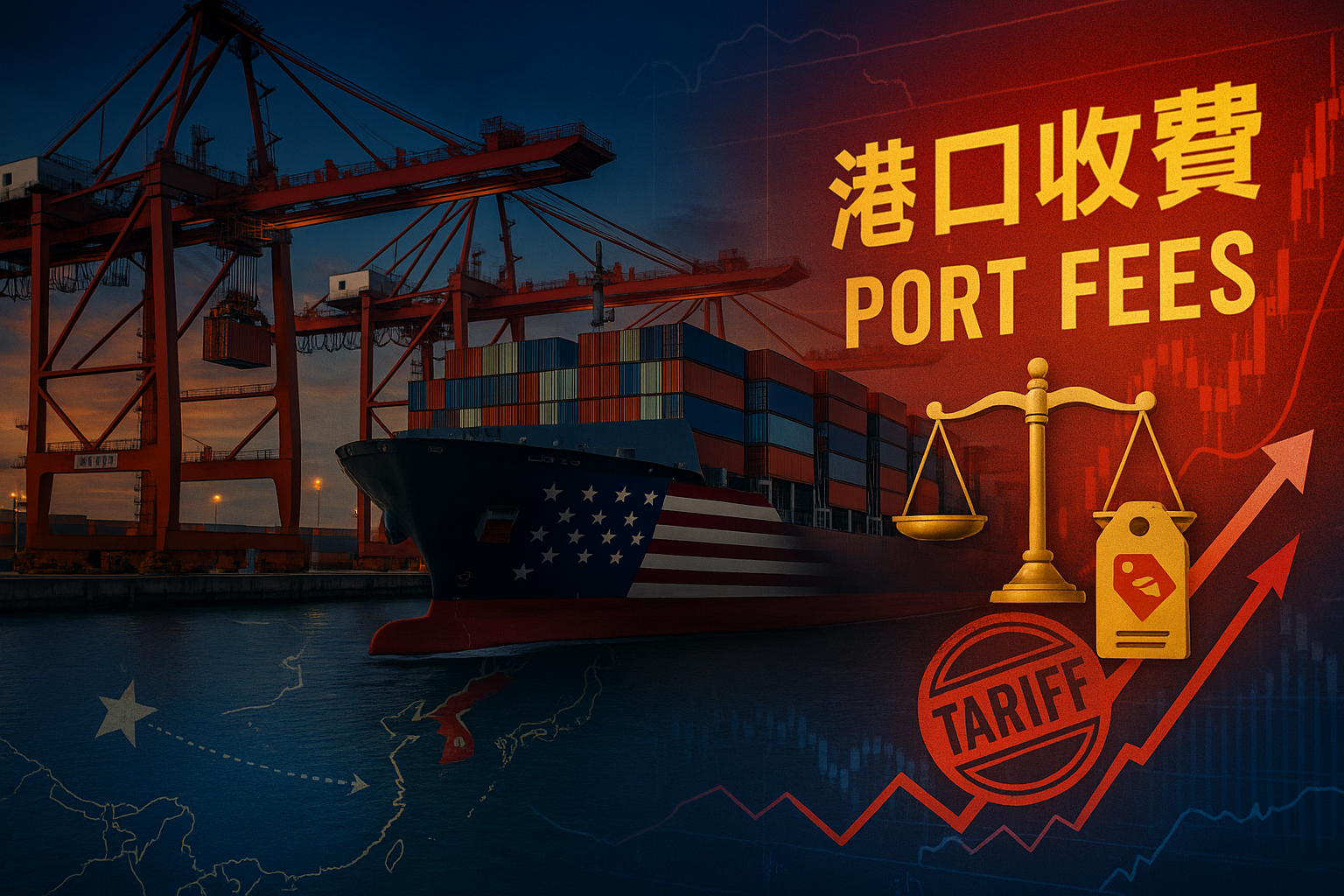China Retaliates: New Port Fees on U.S. Ships Escalate Trade War Drama
By Tredu.com • 10/10/2025
Tredu

China Unleashes Retaliation with Port Fees on U.S. Ships
In a sharp escalation of maritime tension, China has introduced new port fees on U.S.-owned, operated, or built vessels docking in Chinese ports, positioning the move as a retaliatory response to the United States’ planned fees on Chinese ships. This latest salvo underscores how deeply trade and maritime policy are now weapons in the broader U.S.–China trade war.
The Mechanics: What’s Changing, When, and Who’s Affected
Scope & Rates of the New Fees
Starting October 14, any vessel with American ties, whether ownership, operation, flag, or construction, docking in China will face a 400 yuan per net ton charge per voyage. This fee will increase annually through 2028, ultimately reaching 1,120 yuan per ton. Ships will incur the fee for up to five voyages per year.
Beijing frames this move as symmetric retaliation to U.S. port fees directed at Chinese vessels.
Mirror Policy: U.S. Fees on Chinese Ships
The U.S. is scheduled to impose fees on Chinese-built or -operated ships entering U.S. ports, beginning the same day (October 14). The structure: $50 per net ton initially, rising by $30 per ton annually until 2028. Each vessel will be charged at most five times per year under U.S. rules.
The U.S. port fees have drawn criticism, some see them as overly aggressive or destabilizing to global shipping flows.
Strategic & Economic Implications
Signaling Hard Ball in Trade Diplomacy
China’s retaliation is meant to demonstrate resolve. By matching U.S. fees move for move, Beijing is signaling it will not be passive in the face of maritime pressure. The timing ahead of expected U.S.–China talks (e.g. at the APEC summit) ensures this becomes a live bargaining chip.
Impact on Shipping Costs & Routes
Though U.S.-flagged ships represent a small share of global tonnage, Chinese authorities are casting a wide definition of “U.S. links”, possibly including vessels financed, operated, or listed in the U.S.
For major carriers, this may incentivize fleet redeployments or reflagging strategies to avoid the fees. In parallel, U.S. port fees risk pushing Chinese-built ships to reroute or reclassify ownership.
Effects on Trade, Inflation & Supply Chains
These port fees could ripple through import/export economics: added costs may be passed along as higher prices or delays. The added friction in U.S.–China shipping risks compounding logistical and inflation pressure. As shipping giants rebalance routes, some trade flows could shift to secondary ports or alternative hub strategies.
Risks, Limitations & Countermoves
Limited Direct Exposure
U.S.-owned vessels represent a small slice of global fleet capacity. China's heavy-handed labeling might face legal or logistical challenges if shipping firms contest the definitions of “U.S. links.”
Retaliation Escalation & Trade Spillover
If either side continues to raise charges or broaden scope (e.g. beyond port fees, to cargo handling, customs processing surcharges), the conflict may spiral into a full-blown maritime tit-for-tat that disrupts global trade.
Diplomatic Backlash & WTO Scrutiny
China's actions could attract counterclaims in multilateral trade forums. The U.S. may seek to invoke WTO rules or impose further retaliatory sanctions.
What to Watch & Strategic Moves
- Carrier tactics: Watch how major shipping lines (COSCO, OOCL, etc.) reconfigure ship registration, reflagging, or route patterns to skirt fees.
- U.S.–China negotiations: Whether either side uses these fee regimes as leverage or concessions in upcoming high-level talks (like APEC) will be critical.
- Legal challenges or exemptions: Shipping firms may litigate or lobby for carve-outs. Regulatory agencies might adjust rules in response.
- Broader trade responses: Additional Chinese export curbs on critical goods (e.g. rare earths, battery tech) may follow as retaliation arms.
Final Word
China’s move to impose port fees on U.S. ships marks a bold retaliation that mirrors Washington’s own charges on Chinese-linked vessels, a high-stakes escalation in the U.S.–China maritime trade war. While the direct cost impact may be modest initially, the signal is clear: both sides are willing to weaponize shipping rules to gain leverage. The full ramifications, in shipping routes, trade flows, and diplomatic negotiations, will unfold in the weeks ahead.

How to Trade Like a Pro
Unlock the secrets of professional trading with our comprehensive guide. Discover proven strategies, risk management techniques, and market insights that will help you navigate the financial markets confidently and successfully.


